

The Lassen Fragment, is a parchment page from c. 1275. It is one of the four fragments remaining of the original, or early copy of, Saxo's Gesta Danorum. Size is 40x27 cm. It consists of one page with two written sides.


The Lassen Fragment, is a parchment page from c. 1275. It is one of the four fragments remaining of the original, or early copy of, Saxo's Gesta Danorum. Size is 40x27 cm. It consists of one page with two written sides.
It was found 1860 in the literary remains of library-secretary G. F. Lassen, and is now owned by the Royal Library of Copenhagen. It has Royal Library signature of Ny kgl. Saml. Fol. 570.
Correspond to page 275–282 in Peter Erasmus Müller Latin version of Gesta Danorum from 1839 or page 152.29 – 156.14 in Jørgen Olrik & H. Ræder's Latin version of Gesta Danorum from 1931.
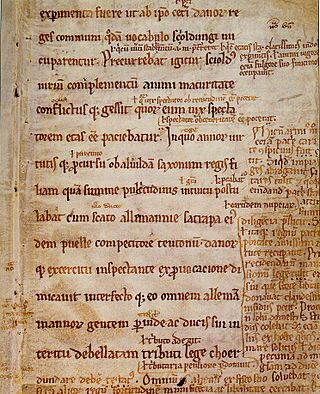
Gesta Danorum is a patriotic work of Danish history, by the 12th-century author Saxo Grammaticus. It is the most ambitious literary undertaking of medieval Denmark and is an essential source for the nation's early history. It is also one of the oldest known written documents about the history of Estonia and Latvia.
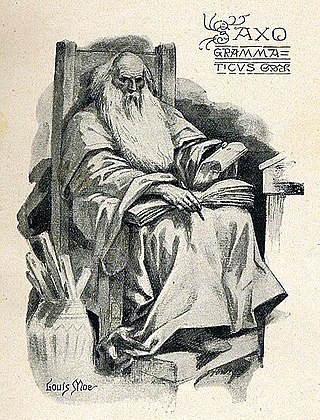
Saxo Grammaticus, also known as Saxo cognomine Longus, was a Danish historian, theologian and author. He is thought to have been a clerk or secretary to Absalon, Archbishop of Lund, the main advisor to Valdemar I of Denmark. He is the author of the Gesta Danorum, the first full history of Denmark, from which the legend of Amleth would come to inspire the story of Hamlet by Shakespeare.

According to the Gesta Danorum, Alfhild, daughter of the Geatish king Siward, was a shieldmaiden who had her own fleet of longships with crews of young female pirates and raided along the coasts of the Baltic Sea.
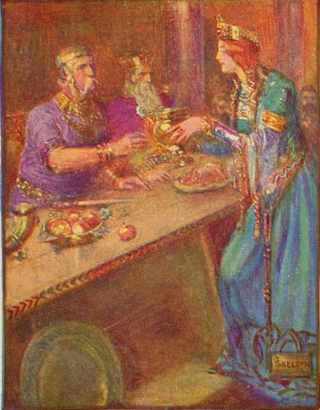
Hrothgar was a semi-legendary Danish king living around the early sixth century AD.

Harald Wartooth or Harold Hiltertooth was a semi-legendary king of Denmark who is mentioned in several traditional sources. He is held to have (indirectly) succeeded his father as king of Zealand and to have expanded his realm. According to different sources, he may have ruled over Jutland, part of Sweden and the historical northern German province of Wendland. He is said to have been finally defeated and killed at the legendary Battle of Bråvalla.
Chronicon Lethrense is a small Danish medieval work from the late 12th century, written in Latin.
Stephan Hansen Stephanius was a Danish historian and philologist. His name is sometimes fully Latinized as "Stephanus Johannis Stephanius"
Christiern Pedersen was a Danish canon, humanist scholar, writer, printer and publisher.

The Kall-Rasmussen Fragment is a parchment page from c. 1275. It is one of the four fragments remaining, or early copy of, the original Saxo's Gesta Danorum. Its size is about 19x11cm. It consists of two pages with four written sides.

The Plesner Fragment is a parchment page from c. 1275. It is one of the four fragments remaining, or early copy of, the original Saxo Gesta Danorum. Its size is 15 cm × 13 cm. It consists of one page with two written sides.

The Angers Fragment (Angersfragmentet) are four parchment pages dating from the 12th-century. They are one of the four fragments remaining of the original Gesta Danorum written by Saxo Grammaticus. This is the only fragment attested to be of Saxo's own handwriting. It consists of four pages with 8 written sides.
Chronica Jutensis also known as Continuatio compendii Saxonis or Chronica Danorum, is a small Danish historical work from the middle of the 14th century, written in Latin. It comes with a smaller summary edition, about one-fourth the size of the original, of Saxo’s Gesta Danorum, known as Compendium Saxonis.
Compendium Saxonis is a summary located in Chronica Jutensis. It contains a summary of Saxo’s Gesta Danorum, about one-fourth the size of the original. It is written in Latin.
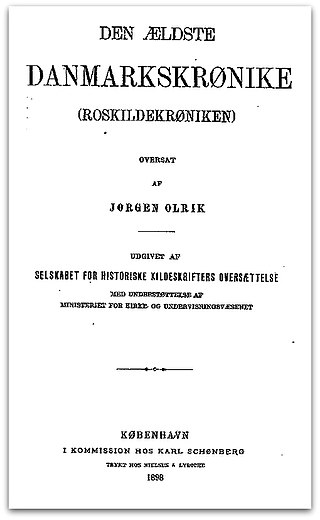
Chronicon Roskildense is a small Danish historical work, written in Latin. It is one of the oldest known attempts to write a coherent account of Danish history by a Danish author, spanning from the introduction of Christianity in Denmark to the author's own time in the middle of the 12th century.
Bjarkamál is an Old Norse poem from around the year 1000. Only a few lines have survived in the Old Norse version, the rest is known from Saxo's version in Latin. The latter consists of 298 hexameters, and tells the tale of Rolf Krake's downfall at Lejre on the isle of Sjælland, described in a dialogue between two of Rolf Krake's twelve berserkers, Bodvar Bjarke, the most famous warrior at the court of the legendary Danish king Rolf Krake, and Hjalte. The poem opens with Hjalte waking up his fellow berserkers, having realized they are under attack. In 1030, King Olav had the bard Tormod Kolbrunarskald recite the Bjarkamál to rouse his outnumbered army in the morning before the start of the Battle of Stiklestad, according to Fóstbrœðra saga.

Anders Sørensen Vedel was a Danish priest and historian. He translated the Gesta Danorum by Saxo Grammaticus into Danish in 1575, and published the influential "Hundredvisebogen" in 1591.

Scanian law is the oldest Danish provincial law and one of the first Nordic provincial laws to be written down. It was used in the geographic region of Danish Skåneland, which at the time included Scania, Halland, Blekinge and the island of Bornholm. It was also used for a short period on the island of Zealand. According to some scholars, the Scanian Law was first set down between 1202 and 1216, around the same time it was translated into Latin by the Danish Archbishop Anders Sunesøn.
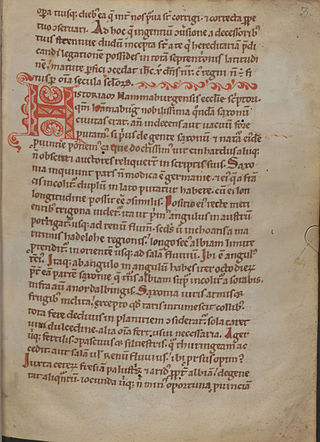
Gesta Hammaburgensis ecclesiae pontificum is a historical treatise written between 1073 and 1076 by Adam of Bremen, who made additions (scholia) to the text until his death . It is one of the most important sources of the medieval history of Northern Europe, and the oldest textual source reporting the discovery of coastal North America.
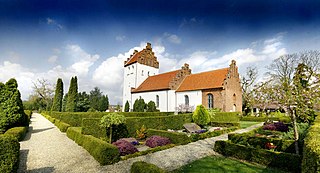
Skjalm Hvide, was the Earl of Zealand in Denmark in the end of the Viking Age (793–1066) and up to his death. Skjalm's father was Toke Trylle, whose father was Slag, based on Absalon, a medieval account scanned, translated and published by Google.
Petrus Olai was a Danish Franciscan friar and historiographer. No details about his life are known. He refers to himself as Petro Olavo Saneropio Minoritano in a colophon of his Collectanea ad historiam danicam pertinentia. A later note in the same manuscript by Anders Sørensen Vedel suggests that he was dead by c. 1570.